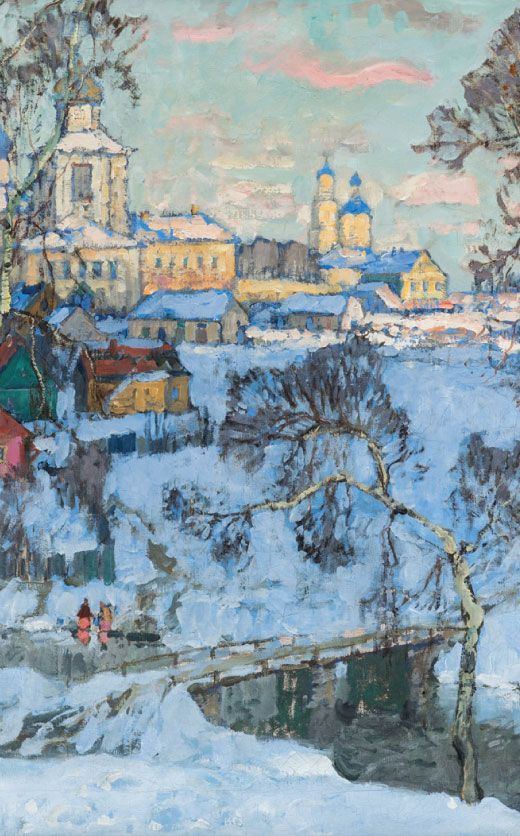Maynard Dixon (1875 – 1946) – Open Range (1942)
About Seller
11944 North Tracey Road
Hayden, ID 83835
United States
Coeur d’Alene Art Auction specializes in the finest classical Western and American Art representing past masters and outstanding contemporary artists. The auction principals have over 100 years of combined experience in selling fine art and have netted their clients over $325 million in the last fif...Read more
Two ways to bid:
- Leave a max absentee bid and the platform will bid on your behalf up to your maximum bid during the live auction.
- Bid live during the auction and your bids will be submitted real-time to the auctioneer.
Bid Increments
| Price | Bid Increment |
|---|---|
| $0 | $100 |
| $2,000 | $250 |
| $5,000 | $500 |
| $10,000 | $1,000 |
| $20,000 | $2,500 |
| $50,000 | $5,000 |
| $100,000 | $10,000 |
| $200,000 | $25,000 |
| $500,000 | $50,000 |
| $1,000,000 | $100,000 |
About Auction
Jul 26, 2025
The 2025 Coeur d’Alene Art Auction, to be held July 26 in Reno, Nevada, will feature 354 selections of unparalleled quality in Western & American Art from historical and contemporary artists such as Charles M. Russell, Maynard Dixon, William R. Leigh, Thomas Moran, Howard Terpning, E. Martin Hennings, and more. Coeur d'Alene Art Auction info@cdaartauction.com
- Lot Description
Maynard Dixon (1875 – 1946)
Open Range (1942)
oil on canvas laid on board
36 × 40 inches
signed and dated lower left
According to Dixon scholar Donald J. Hagerty, “During his more than fifty-year career, Dixon celebrated the West’s inhabitants through his art: prospectors, broncobusters, frontiersmen, trappers, sheepherders, lawmen, teamsters, settlers, storekeepers, and an array of others. But it was the working cowboy and ranch life and the Native American that emerged as some of the most prevalent subjects in the early period. Dixon grew up on the vast plains of the southern San Joaquin Valley, where he became familiar with the hard-riding vaqueros who worked for the sprawling Miller and Lux Ranch and who often drifted in and out of Fresno. By Dixon’s early teens, he was an accomplished rider, with deep respect for the working cowhand.
“For Dixon, the cowboy and the rancher came to represent the loner – someone with a strong moral and physical fiber, a rugged individual who confronted adversity and made it on his own. The image is a creation, in part, of the cowboy’s working lifestyle, but it mostly emerged from the efforts of writers and artists who wrapped the cowboy in romanticism. When Owen Wister’s The Virginian appeared in 1902, it became the prototype for the image of rugged, self-reliant, but sometimes-flawed cowboy, and a model for the hordes of western fiction writers and illustrators who rushed to produce western fiction.
“By the mid-1930s and into the early 1940s, cowboy and range-life subjects rarely appeared in his paintings, but there are notable exceptions. In 1942, Dixon, then living in Tucson, Arizona, decided that he wanted to explore local ranch activities and the dude ranches. Guided by fellow painter Pete Martinez, Dixon made the rounds of local spreads, looking for the color and excitement of cowboying.… That same year, Dixon painted Open Range, a canvas that contains all the elements of Dixon’s style by then: organization of space, clean clear color, his trademark cumulus clouds, and, in spite of the cowboys and their cattle that fill the immediate foreground, compelling emptiness. When The Oxford History of the American West was published by the Oxford University Press in 1994, Open Range was selected for the cover.”
PROVENANCE
Private collection, Wyoming
EXHIBITED
Maynard Dixon: Masterpieces from Brigham Young University & Private Collections, Pasadena Museum of California Art, Pasadena, California, 2007
LITERATURE
The Oxford History of the American West, Oxford Press, 1994, cover, illustrated
The Morrow Anthology of Great Western Short Stories, William Morrow, 1997, cover, illustrated
Wesley Jessup, Donald J. Hagerty, and Jayne McKay, Maynard Dixon: Masterpieces from Brigham Young University & Private Collections, Pasadena Museum of California Art, 2007, p. 71, illustrated
Donald J. Hagerty, The Art of Maynard Dixon, Gibbs Smith, 2010, pp. 62, 64, 66, illustrated
Marian Wardle and Sarah E. Boehme, Branding the American West: Paintings and Films, 1900-1950, University of Oklahoma Press, 2016, p. 13, illustrated
View More InformationCondition
Surface is in good condition. Canvas is mounted to board. No signs of restoration.
- Buyer's Premium



 EUR
EUR CAD
CAD AUD
AUD GBP
GBP MXN
MXN HKD
HKD CNY
CNY MYR
MYR SEK
SEK SGD
SGD CHF
CHF THB
THB













